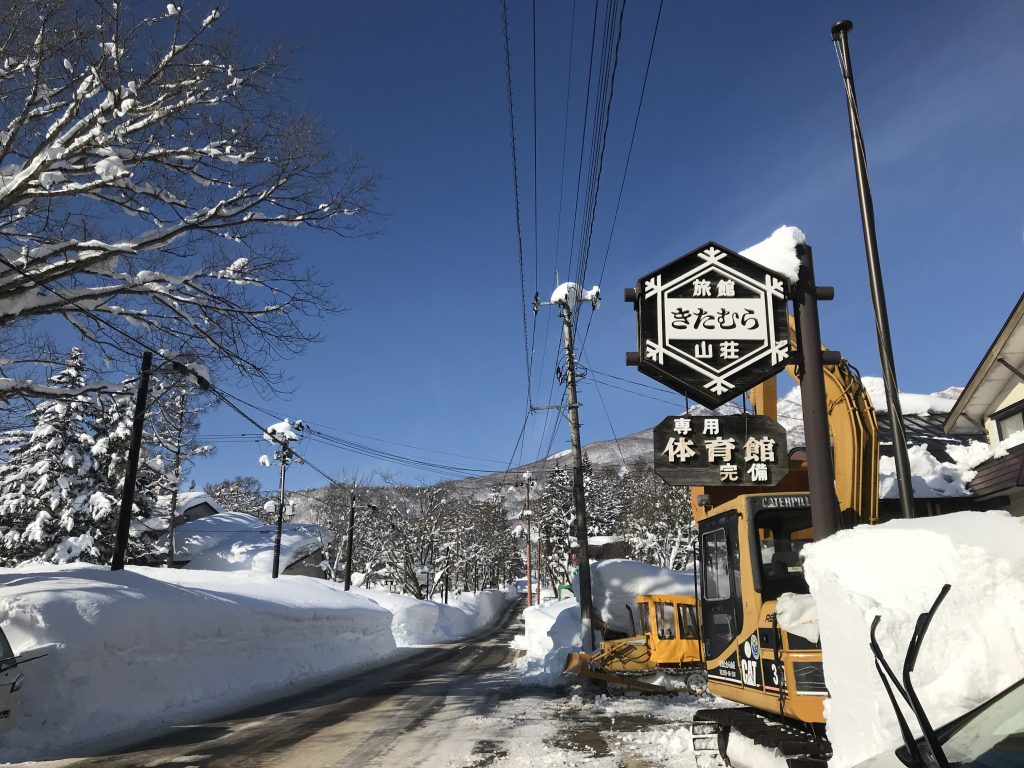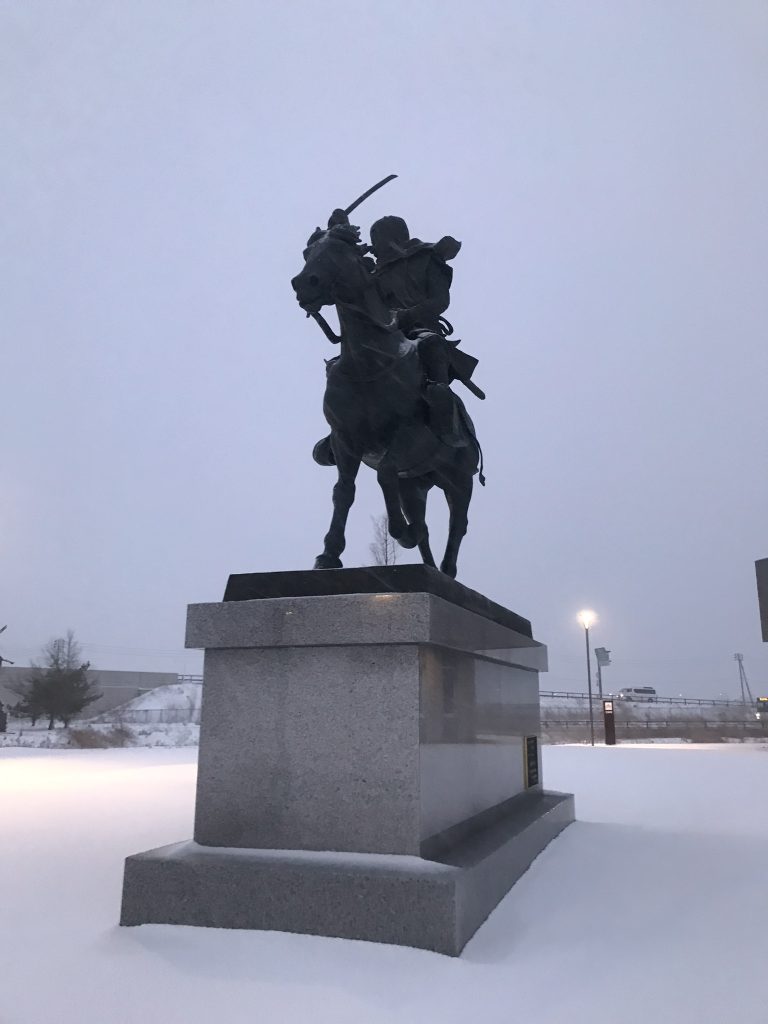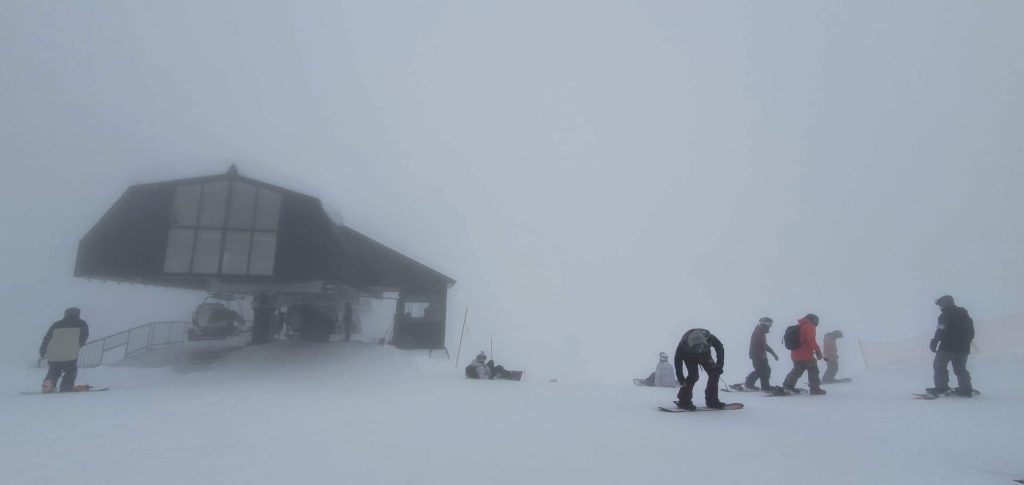Winter
Jennifer Roche sat at her desk and stared out the window. The snowy deluge showed no sign of stopping. Scores of thick clumps fell in an endless barrage, covering everything under the sky in a bulging carpet of white.
She expected to hear at any moment that school was closed, that she was being sent home, or any kind of response to the act of God unfolding outside. “There was no such announcement,” said Jennifer, “that was just kind of what every day was like for the rest of winter.”
Mountains surround Jōetsu on three sides. In winter, they block Siberian squalls from the west, directing their moisture back up into the sky and down onto the city. The result is a disturbing amount of snow. In January alone, Jōetsu receives an average of four meters of powder – that’s almost two Shaquiel O’Neil’s.

“The most surprising thing was hearing that that winter was normal,” said Jen who, like me, experienced her first apocalyptic Jōetsu snowfall in 2022. By all accounts, that year’s bombardment was mild; although the city’s bar for “mild snowfall” is still far higher than most places on earth.
The previous winter, however, was a different story.
Takuma Kobayashi, a Jōetsu resident of some 30 years, witnessed the winter of 2020/21. He recalled, “on the big road outside my house the snowplow couldn’t come for one week, you couldn’t see anything. (…) Tsune (our mutual friend) came to pick me up from Kakizaki. It’s usually a 30 minute drive but it took him three hours. His landcruiser got stuck in the Aoki parking lot and many other cars were stuck on the road.”
In January 2021, the city designed to weather two Shaq’s-worth of snow per-month ground to a halt after 3 meters of powder fell in one night. Residents couldn’t access roads and some could barely leave their homes. According to local news, four people died and 33 were injured.
In past winters, before the invention of snowplows, Jōetsu’s economy survived this recurring apocalypse thanks to a network of covered walkways called Gangi Dori. These coverings, many of them over a century old, still line the city centers of Naoetsu and Takada. Countryside folk bereft of this infrastructure had to make do by other means: they tunneled between buildings like moles.
In those days, a handful of people looked upon Jōetsu’s blizzards with glee: the Uesugi. They were the denizens of Kasugayama Castle, one of Japan’s five great mountain citadels.
Kasugayama Castle lay to the west of Jōetsu’s city center, overlooking the highway between Naoetsu and Takada. For all its towers and parapets, the Uesugi knew their greatest defense was Jōetsu’s snow; a yearly barrier no army could hope to assail. Surrounded by walls of powder, the likes of Uesugi Kenshin could retire to their keep and scheme.

In his half-buried fortress, Kenshin planned campaigns that earned him a place among Japan’s most cunning and tenacious samurai. Official records say he died from a stomach ache. Yet, according to another story, the warlord met his end when a spear-wielding ninja snuck into his latrine pit. Regardless, the snow saved Kenshin from neither. He is buried somewhere on Kasugayama.
In late February, I ventured up the hill in ski pants and snow boots, determined to find Uesugi Kenshin’s grave. I soon came to a forested cemetery, amidst waist deep snow and surrounded by eerie, spherical headstones. I waded deeper into the woods until I found a clearing. In the middle was a particularly grand monument. This wasn’t Kenshin, but one of his lieutenants.
As I stuffed the cemetery map back into my jacket, a thunderclap rang out and the sky turned the color of slate. The wind picked up tremendous force as it shrieked through the trees, ejecting roosting crows in a din of angry barks.
All of a sudden, that graveyard was the last place I wanted to be. Pelted by a sudden hailstorm, I waded down the mountain with inhuman speed. Even today, its castle barely a ruin, Kasuagayama proved unassailable.
Like Uesugi Kenshin, Takuma relishes Jōetsu’s snow. He likes to ski; “powder hunting” as he calls it. In Jōetsu, Takuma doesn’t have to look far for this quarry; the town nestles amidst some of the world’s best ski resorts, renowned for their powder snow.
Jennifer started skiing last year. On the mountain, she took in sweeping views of the alps while enjoying a physical activity that, while exhilarating, was also social. “It was really nice to do an activity and have people you could chat or spend time with,” she said, adding that many of her enduring friendships blossomed on the ski field.

The weekend ski trip became equivalent to hitting the town (convenient, as Jōetsu has no nightclubs). It was the social highpoint of weeks spent beneath snowdrifts, huddled under a heated table, alone for one’s thoughts and a bevy of Netflix offerings.
Little grows under a Jōetsu snowfall save a feeling of profound isolation. I felt this gloom creep into me week by week, to spite the excitement of being in Japan. Gogo Salaswat felt something similar.
“I was like, oh yeah, seasonal depression. I get it every year,” said Gogo, Arizona native and self-proclaimed “desert rat”, “but I never realized how bad it could get until I lived a different season the way that season is supposed to be lived. I was just like, man, this is it huh, this is how it goes.”
It stands to reason that intense winter blues would accompany an intense winter. For me, potent FOMO (fear of missing out) compounded this pestilence. From December through February, I watched a New Zealand summer come and go on my phone. I doggedly sought the kind of fun my friends were having back home, but the ski field, onsen and occasional bouts of drinking never felt like enough.
Eventually, I accepted that I was never going to recapture that kind of fun in Japan – the unparalleled highs of being out with old friends, amidst the music you love in the town you grew up in. Those highs were out of reach no matter how long I looked back. Instead, I had to find new highs, and trust home would still be there when I returned.
In the meantime I shoveled, sipped a range of soups, drank, and skied to shake my soul free of winter’s bitter grip. In time, the snow thawed. The once-vast carpet of white shrank to dirty mountains by the side of the road, reduced daily by each rainfall and moment of sunshine. No new flakes fell on Joetsu. The city, long buried in a state of near-hibernation, began to stir. Shops that were closed for the winter reopened. The days grew longer and sunnier, and the streets began to swell with passersby.
Spring arrived, and I’d almost made it through winter without doing something foolish. Almost.

